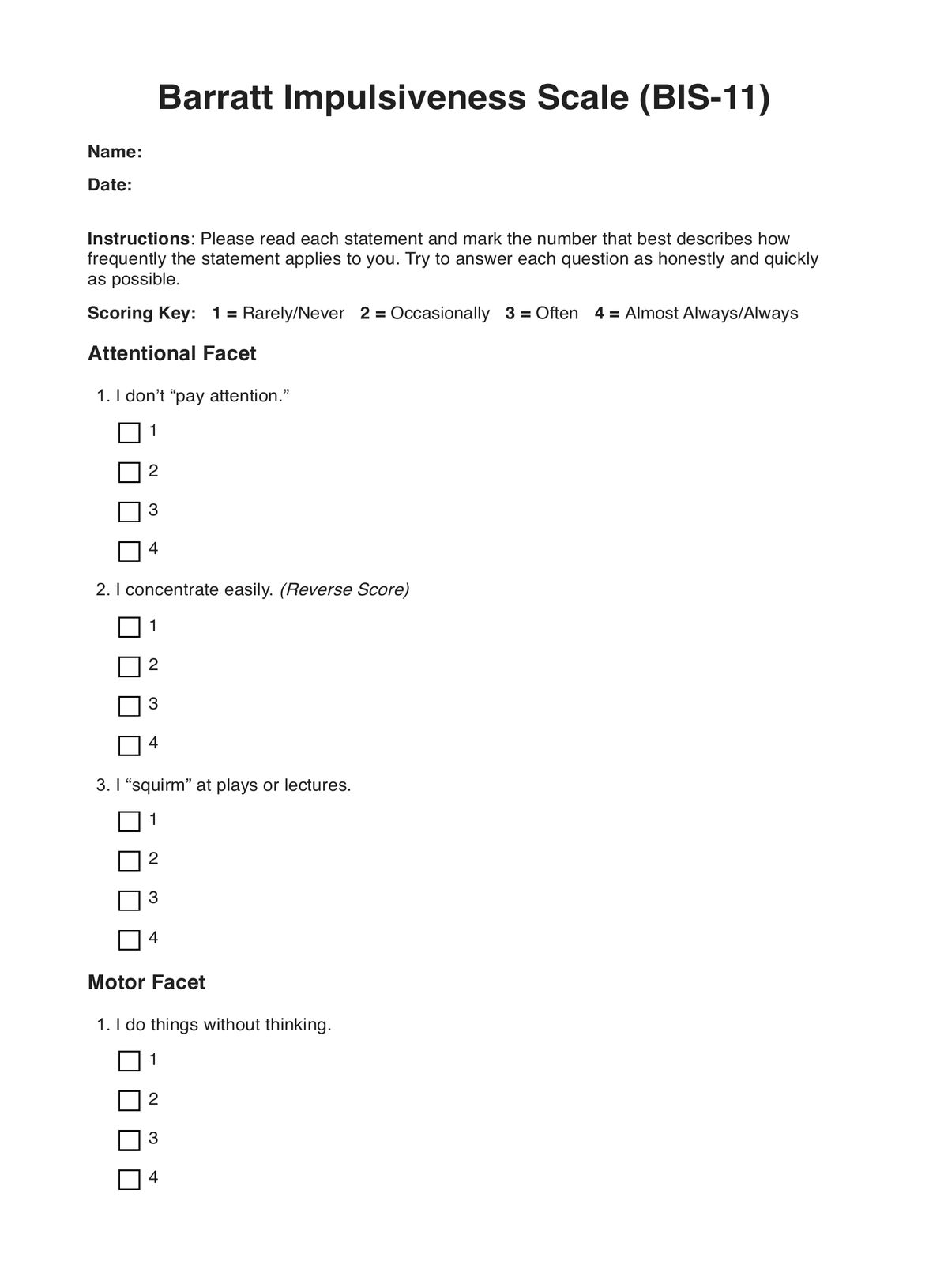The BIS-11 typically takes about 10 minutes to complete.

Barratt Impulsiveness Scale (BIS-11)
Discover how the Barratt Impulsiveness Scale (BIS-11) can help evaluate impulsivity in your practice. Carepatron offers it for efficient patient management.
Use Template
Barratt Impulsiveness Scale (BIS-11) Template
Commonly asked questions
Higher scores on the BIS-11 indicate higher levels of impulsivity. A healthcare professional should interpret.
The BIS-11 is often used when assessing for disorders characterized by impulsivity, such as ADHD.
EHR and practice management software
Get started for free
*No credit card required
Free
$0/usd
Unlimited clients
Telehealth
1GB of storage
Client portal text
Automated billing and online payments











